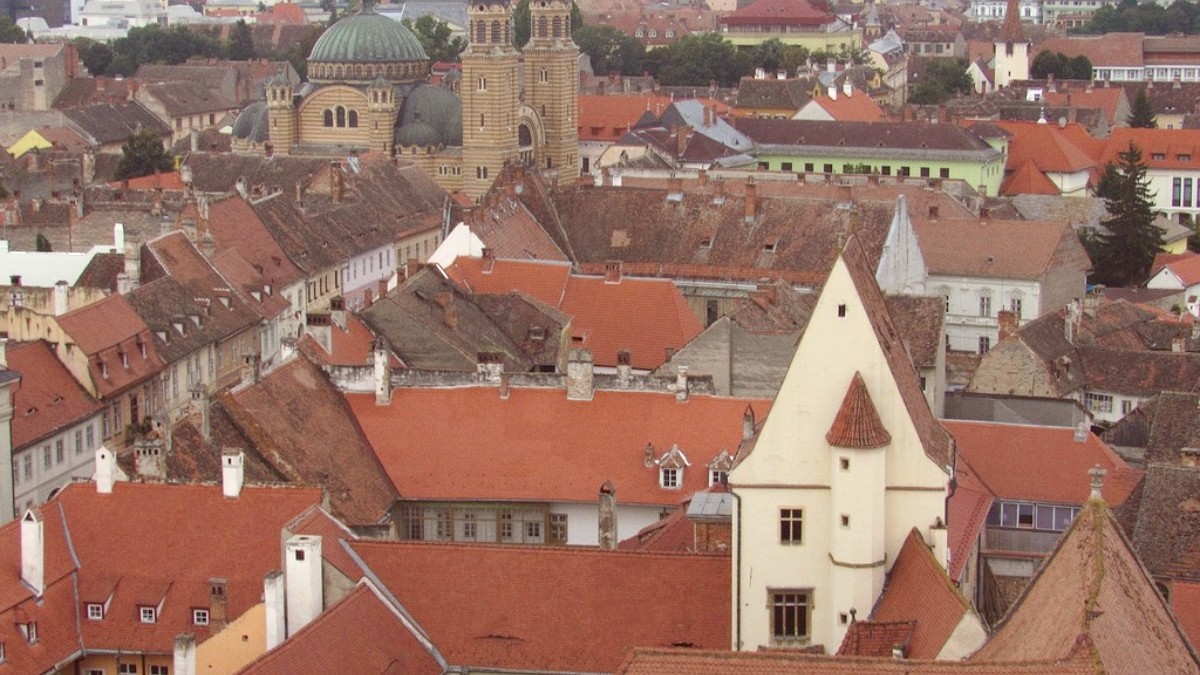
Transylvania, Romania
Sibiu sits approximately 20 kilometers from the Făgăraș Mountains, Romania's highest mountains. These majestic peaks form a dramatic backdrop, influencing Sibiu's climate and providing opportunities for outdoor activities and scenic drives.
Population (2021 census): 134,308 inhabitants. Area: Approximately 121 square kilometers (46.7 sq mi). The city covers a considerable area, with the compact and walkable historic center.
Languages: Romanian is the official language. German holds historical significance due to the Saxon heritage, and some older residents may speak it. Hungarian also by a minority. English understood and spoken in tourist areas, hotels, restaurants, and by younger generations, communication is straightforward for international visitors.
Tourism is a major role, driving much of the city's economic activity and contributing to its welcoming atmosphere. Other important sectors include automotive components, textiles, food processing, and research and development.
Sibiu, historically Hermannstadt in German, boasts a deep and complex history. German colonists, Transylvanian Saxons, founded the city in the 12th century. They established a fortified settlement that quickly grew into one of the most important and prosperous urban centers in Transylvania.
Largest and wealthiest of seven walled citadels.
Major commercial center on trade routes between Europe and Ottoman Empire.
Construction protected citizens and trade interests.
Designation brought renewed investment and international profile.
Diverse festivals, exhibitions, and performances throughout the year.
Electricity: 230V, 50Hz, Type F (Schuko) sockets. Travelers from countries with different voltage or plug types (like North America or the UK) Require a suitable power adapter and potentially a Voltage converter for sensitive electronics.
Major Airport: Sibiu International Airport (SBZ). This airport offers connections to several European cities. Direct access to Sibiu is available for many international travelers.
Sibiu's central location in Romania, within the Carpathian arc, made it a historically strategic point for trade and defense. This geographical placement supports exploring other parts of Transylvania, including other fortified towns and natural attractions.
Calling Code: +40 for Romania, followed by 269 or 369 for Sibiu. Currency: Romanian Leu (RON). One Leu divides into 100 Bani. Time Zone: Eastern European Time (EET), UTC+2. During daylight saving, it shifts to Eastern European Summer Time (EEST), UTC+3.
Sibiu received the designation of European Capital of Culture in 2007, alongside Luxembourg. This brought renewed investment in cultural infrastructure and a greater international profile.
The city's commitment to cultural programming continues today, offering a diverse array of festivals, exhibitions, and performances throughout the year.
Explore Sibiu's galleries featuring local and international art.
Attend concerts or theatre shows in historic venues.
Experience cultural festivals throughout the year.
Sibiu's rich history extends beyond the medieval period, encompassing periods of Ottoman and Austro-Hungarian rule, each leaving architectural and cultural marks.